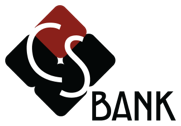%20(16).jpg)
Creating Your Savings Plan
Are you looking for a fresh start for your savings plan in the new year? As the calendar turns over, it’s a great time to review your annual savings goals and make any needed changes to your plan for the coming year. If ever there was a year that taught us the importance of having savings to fall back on, it was 2020. In this guide we’ll help you set goals, create a plan to achieve them, and learn about the best savings account(s) for your needs. So grab your list of financial resolutions and start creating your new savings plan!
Define your savings goals
The first step in creating a savings plan is to define your savings goals. Your savings goals will generally fall into three categories comprising the known and the “known unknown.” Here’s how to think through your savings goals:
Short-term
Think of a short-term savings goal as any large expense you have planned in the next one-five years. Examples include:
- Purchasing a new or used vehicle
- Going on vacation, especially a big trip
- Replacing an older tech device or household appliance
- Down payment on your first house
- Paying for your wedding
- Home renovation
- Starting your own business
Find the right savings account to meet your savings goals.
Long-term
In this category, we’re talking about playing the long game with savings goals that will take you more than five years or even a decade to achieve. The biggest examples of long-term savings goals include:
- Retirement
- A child’s college education
- Paying off your mortgage
So, how much do you need to stow away in your emergency fund?
- Start with a goal of $1,000.
- Then, work your way up to one month of living expenses.
- Finally, aim for six months to a year of living expenses, depending on how stable your job/career is.
Review your budget to see where you can cut back, then add the extra to your savings.
- Create or refresh your budget. Where does your money really go each month? Remember that a budget isn’t an ideal; it’s a flexible document that should represent the ways you actually spend money. All you need is pen and paper or a spreadsheet. There are also plenty of budgeting apps out there if you want to get fancy.
- Look for places to cut back. In terms of your discretionary spending, aka the non-bills or essentials, is there one or more categories where you could reduce your spending, even by a little bit, and redirect that amount into savings? For example, look at your recurring auto debits first--things like gym memberships, app subscriptions, etc. You may be signed up for memberships or subscriptions you no longer use.
- Supplement your income. Sometimes it’s hard to carve much or any extra money for savings out of your current budget. In that case, consider additional income streams such as part-time or gig work, selling unwanted items in your home, etc.
Include short-term and long-term savings goals as well as an emergency fund in your savings plan.
- High-interest savings account: A great option for any savings goal. Keeps your money liquid while it grows.
- Statement Savings: Designed for adults and minors. It includes paper statements, and there are no service charges for minors.
- Money Market Account: Once you have a higher savings balance, you can earn a higher interest rate while still enjoying liquidity and some of the benefits of a checking account.
- Certificate of Deposit (CD): When you don’t need to maintain liquidity for a certain period of time, a CD can offer a higher interest rate on lower balances than with a money market account.
- Individual Retirement Account (IRA): Specifically for your retirement savings, IRA accounts may come with tax benefits--talk to your tax advisor.
- Health Savings Account: Save for current and future healthcare expenses with pre-tax dollars. HSAs never expire, meaning you can hold onto your balance for as long as you need.
Create A Yearly Savings Plan
Once you've created your savings plan for the year, make it a habit to review your savings plan and your goals each year. Conduct an annual financial checkup and adjust your savings plan as needed.
Start with $1,000 in your emergency fund, but try to work your way up to 6 months of living expenses.
Start saving with CS Bank today!
Ready to take the first step toward realizing your 2021 savings plan? CS Bank offers a variety of savings options to meet your needs. Compare savings accounts, use our savings goal calculator, contact us to learn more, or visit your nearest CS Bank location today to open a new savings account, CD, or IRA.


